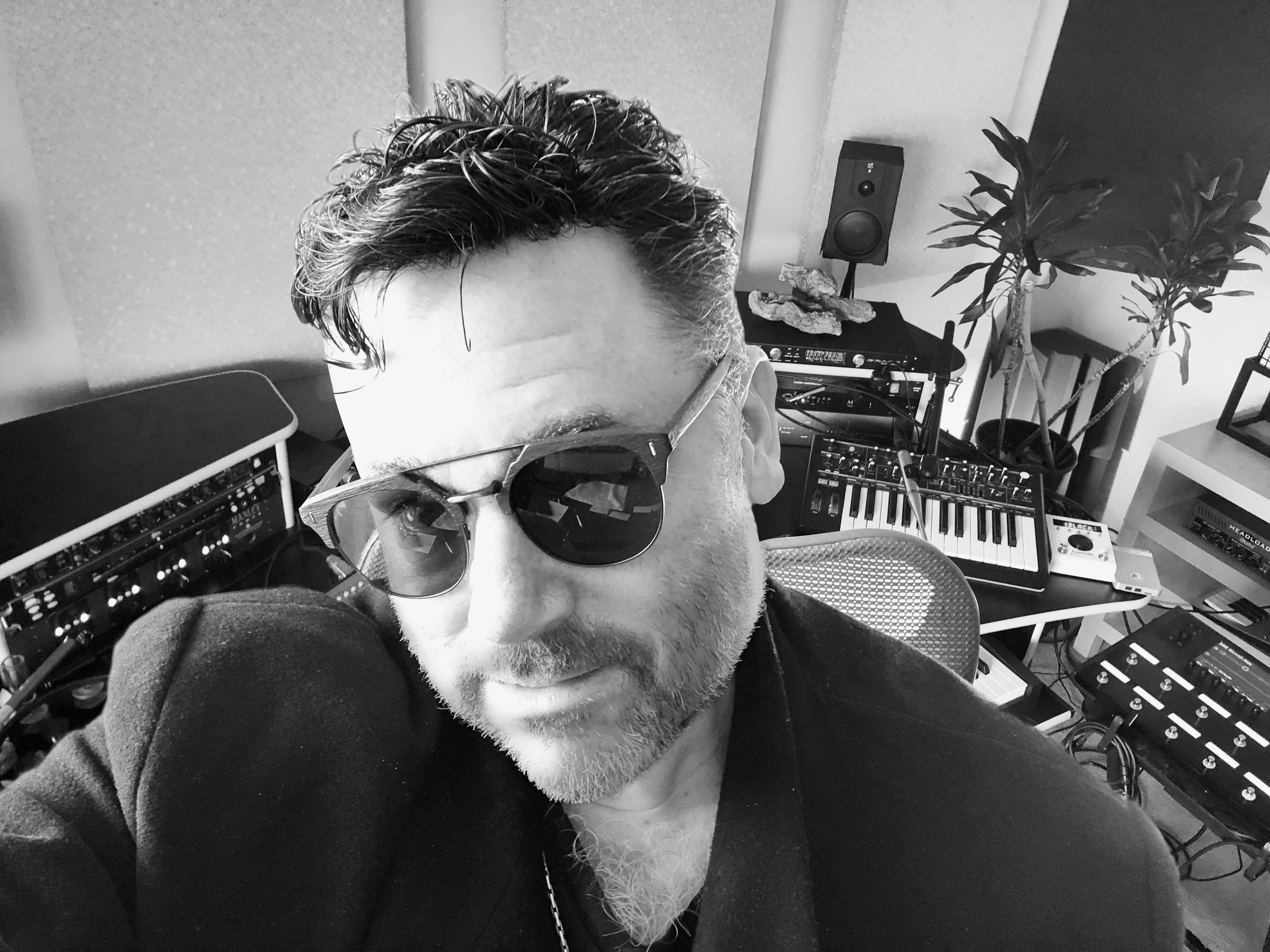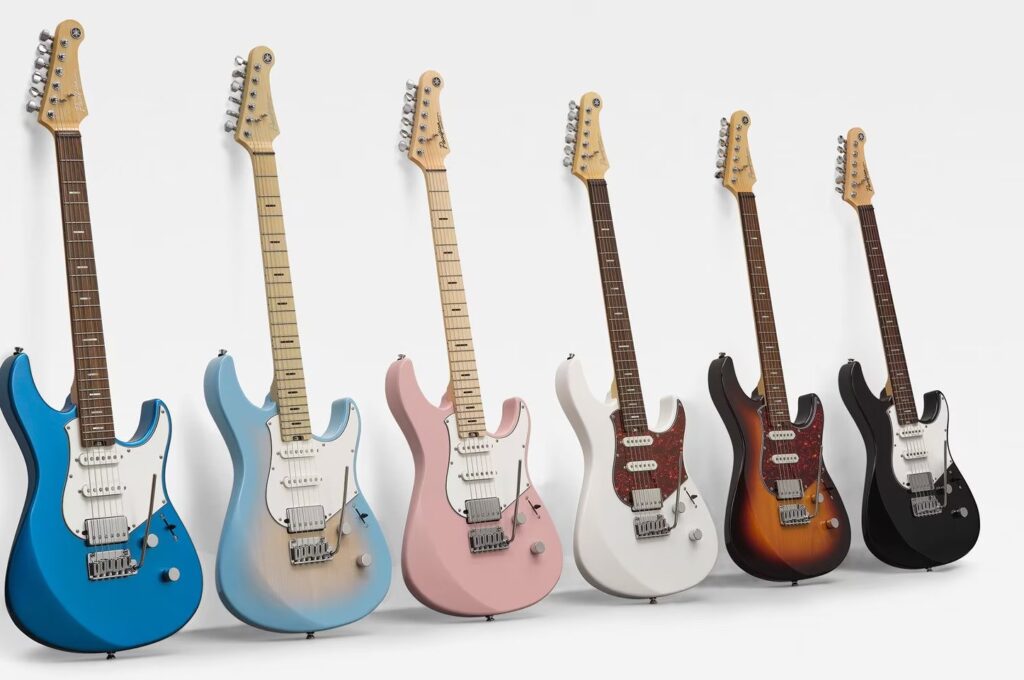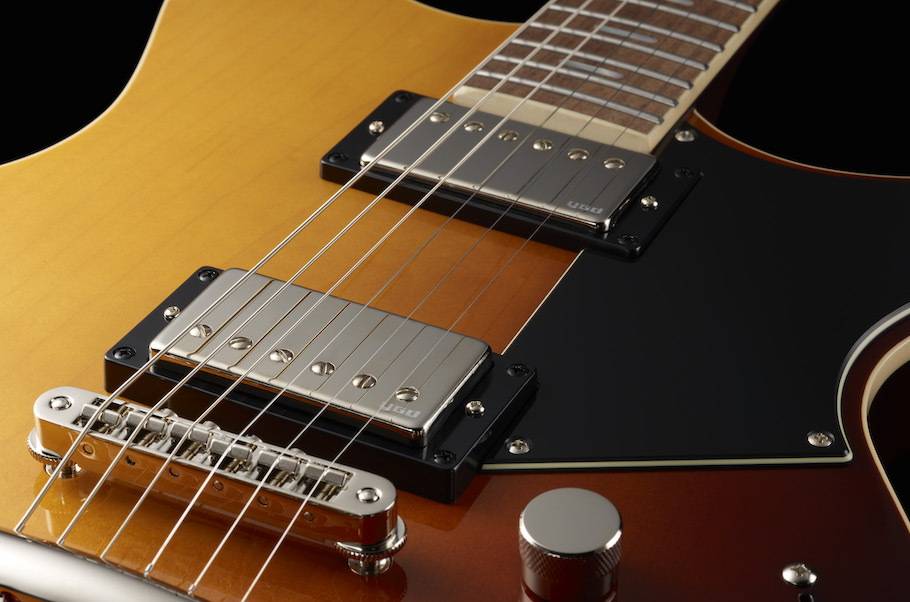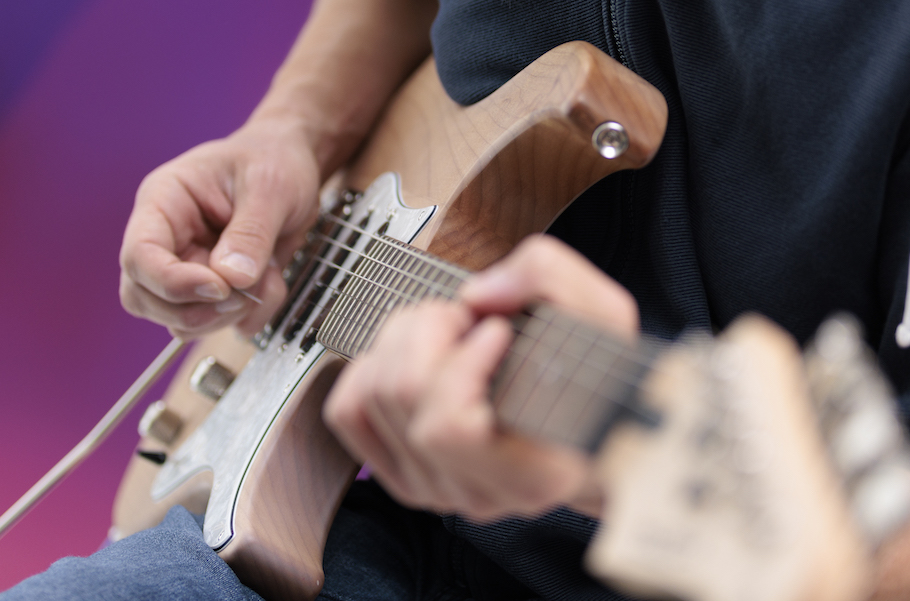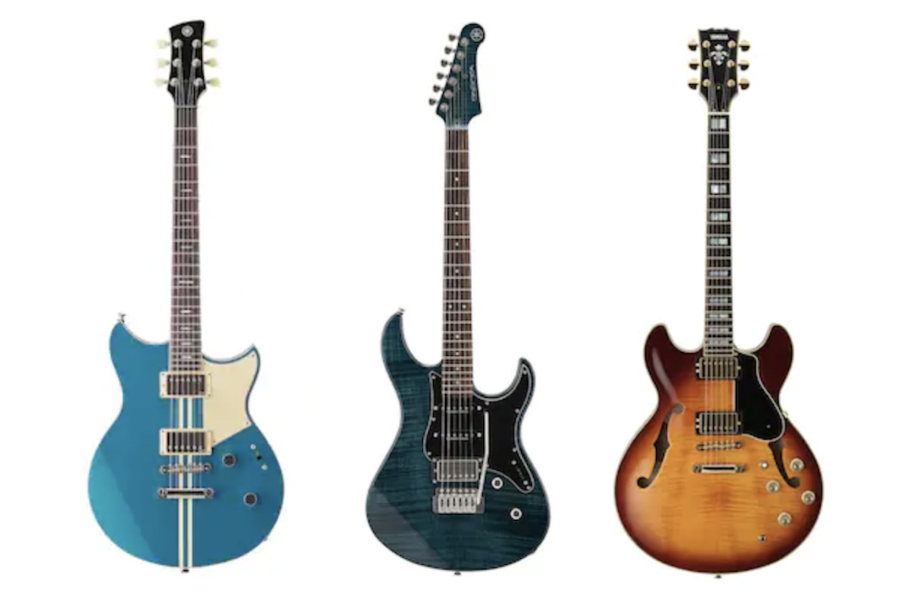Top 10 Electric Guitar Effects
These are the sonic trimmings that bring electric guitar to life.
It’s not just distortion, delay and reverb anymore. Today, there are thousands upon thousands of plug-ins and pedals that can change the sound of an electric guitar in countless ways. To help cut through the fuzz, here are 10 of the most popular electric guitar effects, complete with audio examples and screenshots showing their settings.
1. DISTORTION
When you think of blazing hot guitar sounds, there’s usually distortion involved. This comes from the harmonic saturation that occurs when you overload a preamp and/or vacuum tubes, but it can also be successfully emulated in digital models of amp sounds. Distortion is a mainstay of heavy metal and thrash music and provides extra sustain, tone and grit to your signal — think the classic sound of Randy Rhoads on Ozzy Osbourne’s “Crazy Train.”
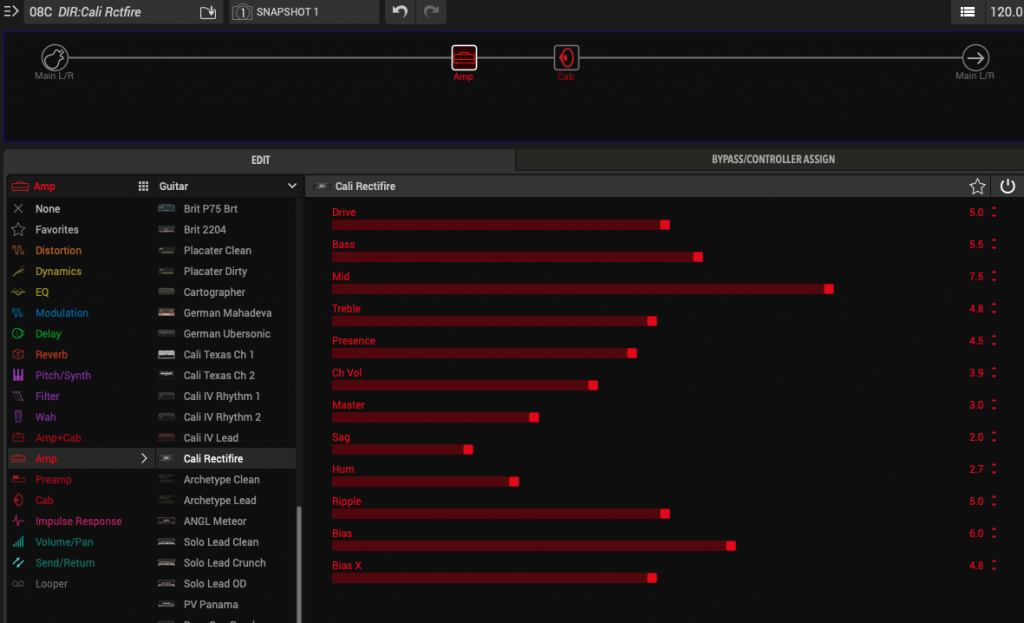
2. FUZZ
Fuzz is another form of distortion, this time generated by using transistors to create a “clipped” square wave. (Like distortion, fuzz is something that can be successfully emulated by digital models.) Jimi Hendrix’s “Foxy Lady” is one of the best examples of fuzz guitar on record.

3. DELAY
A delay is simply a copy of the original signal, usually occurring milliseconds later. Many guitar effects processors and pedals allow you to set this in BPM (Beats Per Minute) with the use of a “tap tempo” button so that the delays can be synchronized with the music. Controls typically allow you adjust the effect level, the delay time and number of delays, as well as the amount of feedback (that is, how much output signal is fed back to the input). You can also usually pan the delays in stereo for an even more powerful sonic experience, as you can hear in the audio clip below. U2 guitarist The Edge often uses delays prominently, for example on “Where The Streets Have No Name.”
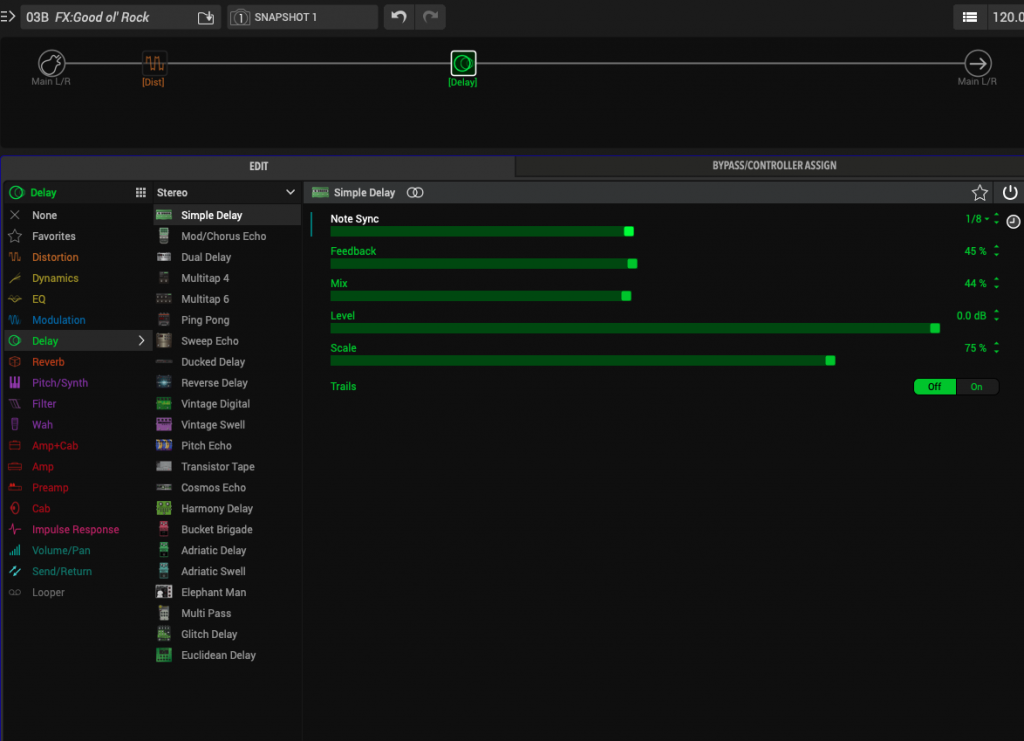
4. REVERB
Reverb is the sound of an acoustic space, where sound waves are bouncing off walls, ceilings and floors to create a sonic “wash.” Early recording studios (such as the famed Abbey Road in London, or Capitol Records in Los Angeles) created reverb by placing speakers in small but very “live” rooms (usually with tiled walls and concrete floors and ceilings), with carefully spaced microphones placed nearby to pick up the “re-amped” sound, which would then be blended in with the original source signal.
Of course, this method of generating reverb wasn’t (and still isn’t!) practical for most people. Starting in the 1960s, guitar amps often came outfitted with a spring (or set of springs) to generate reverb, along with mounted transducers to pick up the reverberated signal. (Think Dick Dale or any surfer guitarist of the era.) Today’s digital emulations of spring reverbs (whether in pedal or plug-in form) sound equally cool.
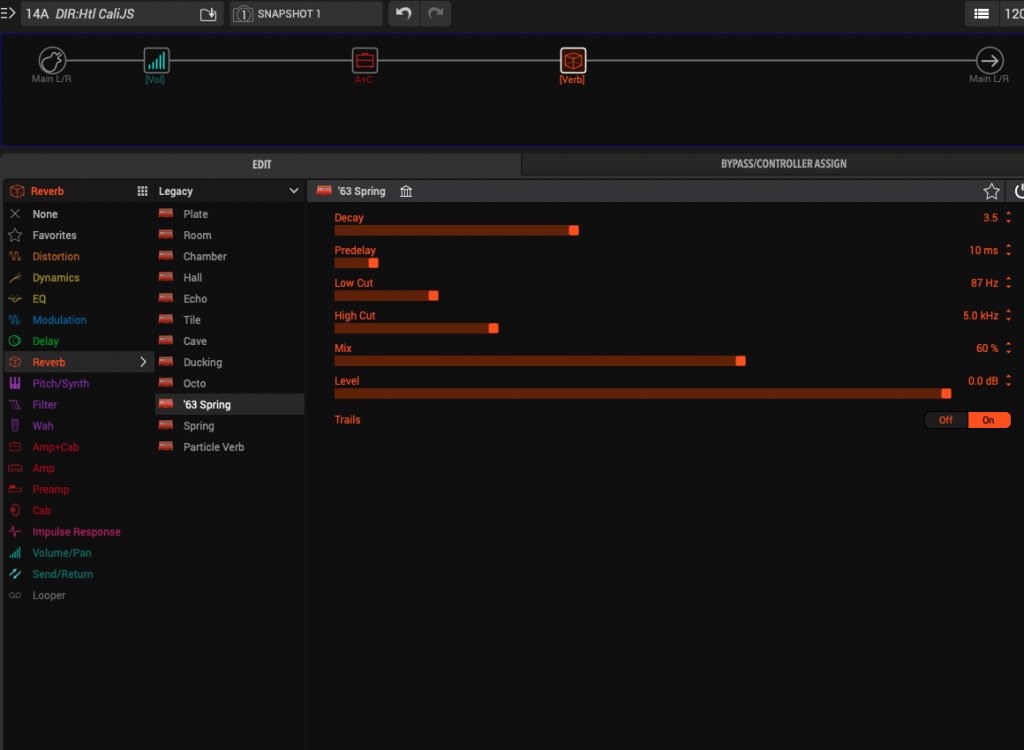
The recording studios of the ’70s offered a different kind of reverb called “plate” reverb. This was generated by a large, thin sheet of metal suspended by springs or clamps, with contact mics mounted on its surface to pick up the reverberated sound. Again, this isn’t practical for most homes (or stages), but modern digital emulations of plate reverbs sound just as good, making for a nice “washy” effect in which the sound of the guitar seems to float in space.

5. PHASER
What happens when you combine two identical audio signals together, but with one very slightly delayed? You get something known as phasing. Guitar phasers apply subtle filtering to shift the phase relationship of the two signals back and forth, creating this signature effect. The late Eddie Van Halen was well known for his use of phasing, as can be heard on songs like “Eruption” and “Atomic Punk.”
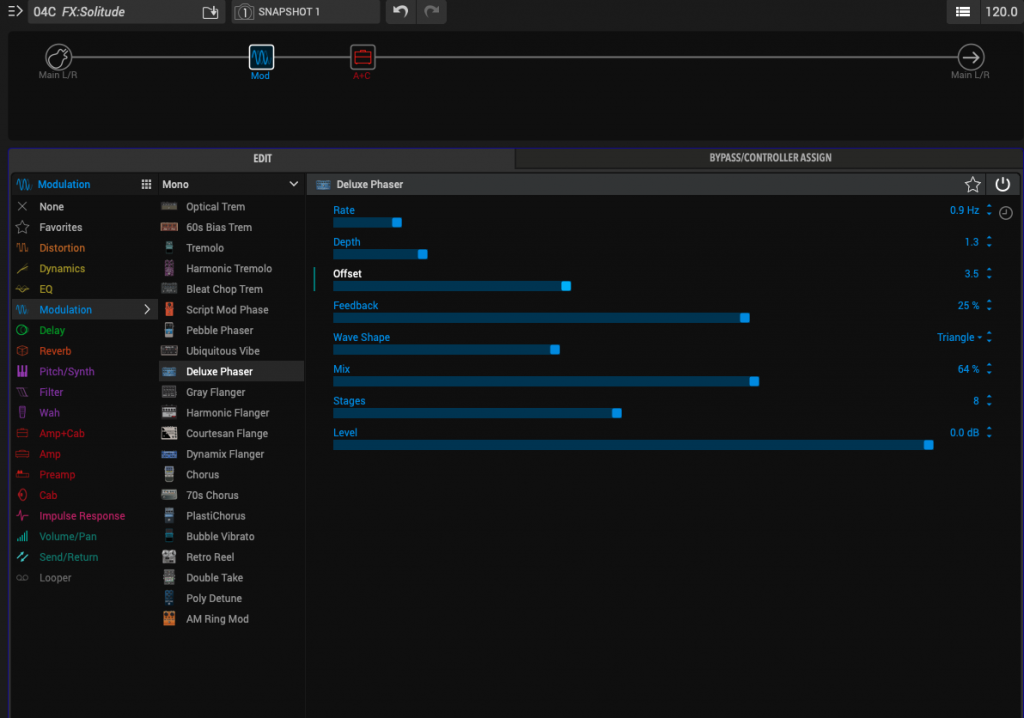
6. FLANGER
Add a subtle time modulation to phasing and you get what is known as flanging. (The term originated because this overlay of signals initially was done by playing two tape recordings of the same sound simultaneously while subtly changing the speed of one by gently pressing a finger down on the metal flange of one of the tape reels.) Technically, this creates what’s known as a comb filtering effect, but most of us simply refer to it as a “swooshing” sound.

7. CHORUS
Chorus is one of the most popular guitar effects. It uses subtle time and pitch differences to create a “doubling” effect that adds sparkle and shimmer to your sound. The delay times are usually quite short — under 30 milliseconds (thousandths of a second) — and the pitch wobble is generated by modulating the delay time with an LFO (Low Frequency Oscillator). Chorusing was a mainstay of the sound of Police guitarist Andy Summers; think “Message In a Bottle.”
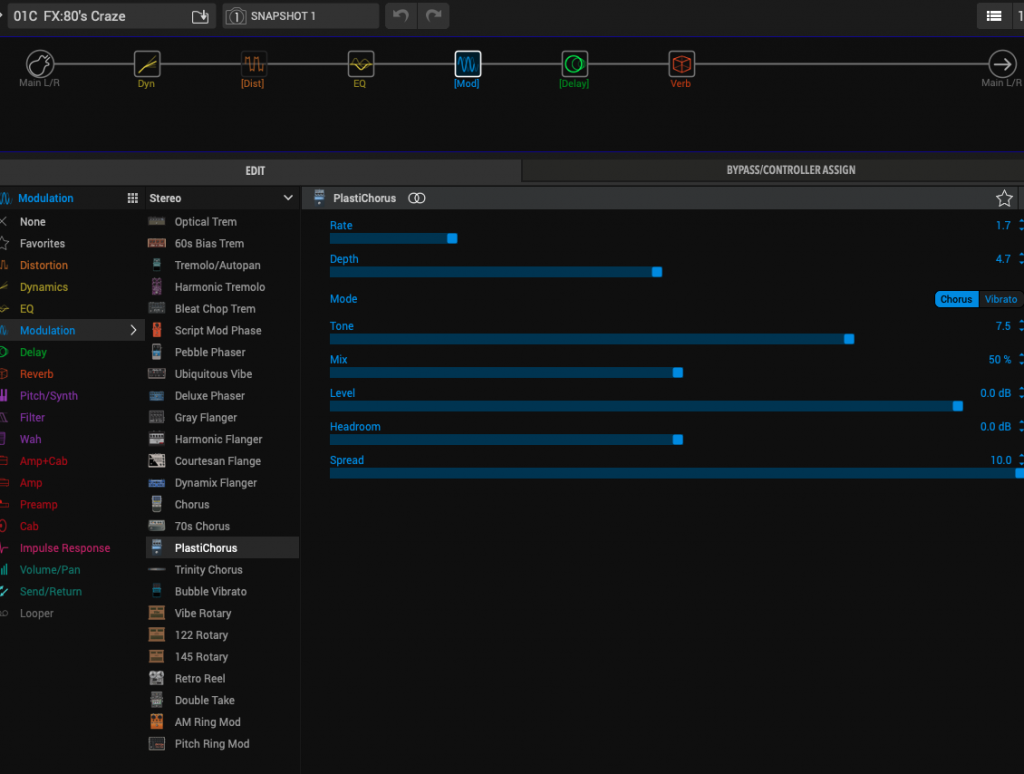
8. PITCH SHIFT
A pitch shifter alters the frequency (pitch) of the original input signal, then blends it back in with itself. This can be used to generate either a different musical note (a fourth, fifth, octave, etc.), or more commonly, a very subtle detuning of the note (a quarter-tone or less) for a “harmonizer” effect. With the use of a blend knob, you can add the extra shifted note (or notes) back into the original signal to your taste.
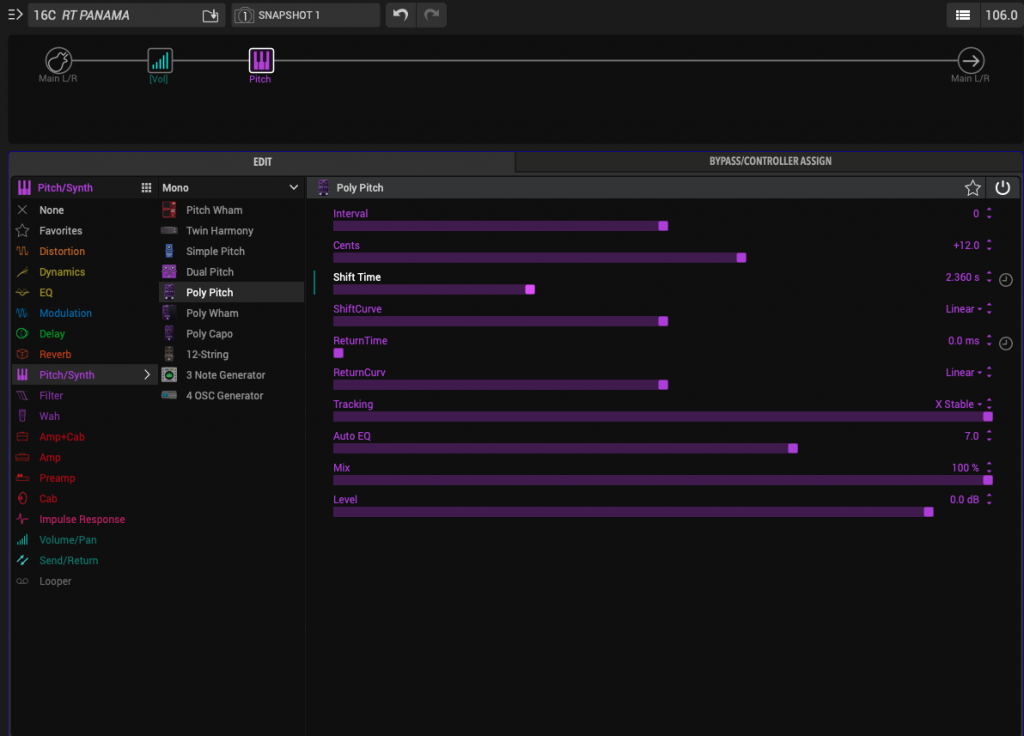
9. ROTARY
This guitar effect is based upon the sound of a rotating speaker cabinet called a “Leslie,” originally designed for use with the Hammond organ. It didn’t take long before players like George Harrison realized how cool it was to run a guitar through a Leslie too! It’s a big part of his sound in his late-era Beatles and solo records, and it plays a major role in the Tom Petty song “You Don’t Know How It Feels.”
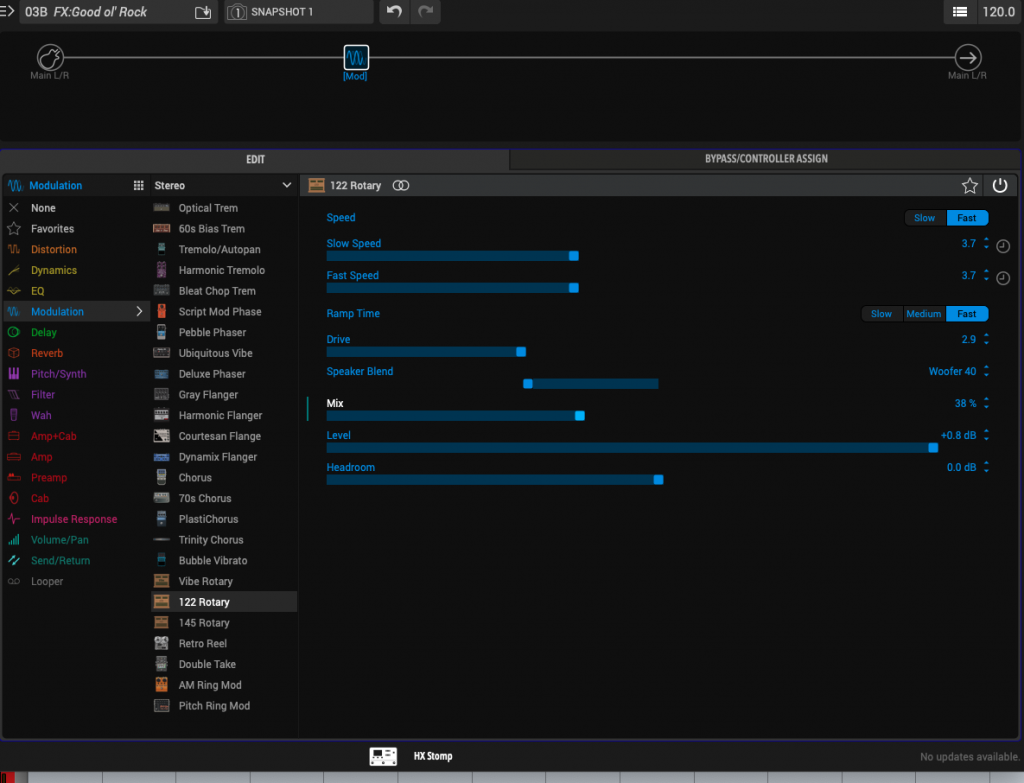
10. WAH
This effect is normally controlled with a foot pedal; as you press the pedal up and down, it opens and closes a filter, similar to the action of manually turning a tone knob on an electric guitar as you play notes. (There are also “auto-wah” effects that are created by using a low-frequency oscillator — or “LFO” for short— to repetitively and automatically modulate a filter without the use of a pedal.) This creates a sound like a voice saying the word “wah,” hence the name. The wah effect reached the pinnacle of its popularity in the ’70s (think “Shaft”), but it’s still sometimes used today. When it comes to examples, there are few better than the classic “Theme From Shaft” by Isaac Hayes, or Jimi Hendrix’s “Voodoo Child.”

Bear in mind that you can also combine two or more effects to create more complex tonalities: for example, distortion and wah (archetypical Hendrix), or reverb, delay and chorus (a big part of the sound of The Police). Take the time to experiment and create some of your own signature sounds using the effects on this list!









